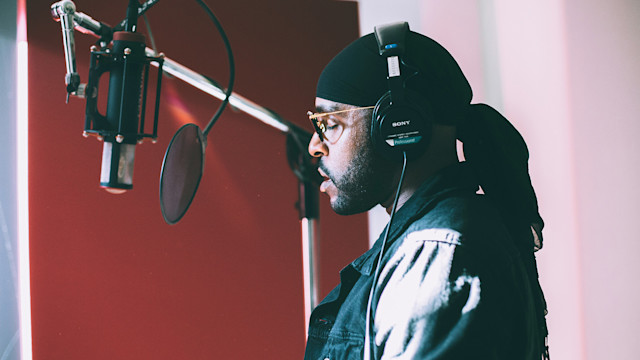Professional Vocal Mixing: Delay Effect on Vocals
September 18, 2024 - Delay is one of the most powerful effects you can apply to your vocals. Here’s how to use it professionally and effectively.

Creating space effectively in your music can be a daunting task, and when first starting out there’s a temptation to crank the reverb and call it a day. This results in the audio equivalent of Monet’s last paintings - pretty cool, but any definition or clarity is lost immediately.
Arguably, one of the most important lessons a producer can learn is that using delay is more useful, versatile, and important than reverb. Delay provides important information to human ears, which we then use to understand our environment, reverb does not provide this- in fact it’s the delay of the reverb that provides environmental information.
Humans have used delay for thousands of years, in caves, canyons and more recently in man-made structures like cathedrals. It makes sense that delay should sound great when paired with one of the oldest human instruments: vocals. Read on to find out how to get the most out of your vocals with delay.
Start with a Slap
One of the main reasons people reach for the reverb before the delay is because the learning curve with delay is steeper than with reverb. There are normally more parameters in a plugin or with a pedal, and figuring out how to get what you want can take more trial and error.
The first thing you can do to make your vocal sound wider is by introducing a slap back effect. If you go into a large, emptyish space such as a multi-storey car park, or a small hall, you’ll be able to hear this naturally. This type of delay can almost act as a type of doubler, which makes your vocals feel less thin and isolated. The key thing is making sure that your vocal feels right, rather than copying and pasting specific settings.
Getting the slap sounding right can be challenging, but platforms like Soundtrap have pre-made slapback effects built in, so the balance is right, and all you have to do is adjust the mix and delay settings. Just right click on your vocal track, scroll down to effects, head to the echo tab, and you’ll see ‘Slapback’ listed alongside a few other great effects.
Timing is Everything
One of the main obstacles with getting the most out of delay is knowing how to make it serve your song, rather than dictate it. Knowing the speed, pace and timing of your track is key to utilizing delay professionally in your track.
If you are recording a slower track with long, drawn-out vocal performances you’ll be able to get away with using longer delay effects. With faster, more energetic tracks, shorter delays will need to sit in the pocket and take more of a back seat.
A simple way to set things up for yourself is to synchronize your delay effects to the tempo of the song. You can do this in Soundtrap, by selecting the sync button next to the time dial found on many of Soundtrap’s delay effects. You’ll then be able to move the dial clockwise or counterclockwise to determine what kind of delay you want, and it will align with the tempo of your track.

Never Forget Filters
Often you’ll see options for low and high cuts on delay effects. This is because filters dramatically influence the sound of delay, and they can be used creatively to modify how a delay sounds.
If you use high pass filters (removing low frequencies) then you’ll end up with a delay that sounds far clearer and more present. If you use low pass filters (removing higher frequencies), then the depth of the delay will increase substantially. As a rule, I tend to high pass my delay effects on my vocals, to subtly increase clarity into the mix, normally cutting everything below 400-600hz.
What’s key here is not only remembering how to use delay, but remembering the part that vocals play in your overall arrangement. In most music, vocals need to be the most present part of a mix, so you tend to aim for clarity as a result. If you’re making something with a shoegaze or ambient feel, or making music where vocals are more supplementary, then you can increase the depth of the delay of your vocals.
Lyrics, Lyrics, Lyrics
We’ve talked a lot about using Delay as a mixing tool, but what about its practicalities in terms of composition? One of the most frequently used techniques in vocal processing is using repeating delays to add rhythm and emphasize vocal parts. This is a really great way to make your lyrics sound massive and give them plenty of weight in your track. One thing to be aware of is that repeating delays on a vocal can very easily build up, and start canceling each other out, resulting in a loss of clarity on the vocal part.
Again, it comes down to synchronization of your vocal delay settings, making sure they align with the tempo of the track using the sync settings that are found on most delay plugins and effects. One of the best examples I’ve heard of delay being used in this way is in the U2 song “Vertigo.”
There is a subtle delay on Bono’s vocal throughout the verses, but the real magic gets going in the chorus. The lead vocal of “Hello, Hello” is fairly dry, and is followed by a supplementary vocal of “Hola” which sounds like it’s being sung twice. However, this is only sung once, with a synchronized delay applied to the vocal. This sets apart the “Hola” vocal from the main refrain, creating definition and space. It also aligns with U2’s music and their image as it sounds like it’s being sung in an enormous stadium- exactly the kind of venue the band would normally play in.
Modulation Station
One of the more psychedelic techniques you can employ is by modulating your delay. Modulated delay can work in a number of ways to enhance your vocals.
Creating Movement
Creating movement in your delays can make them sound far more dynamic and more enjoyable, especially for headphone listeners. Humans listen in stereo, and exploiting that can really elevate a vocal from dry and utilitarian, to wet and experimental.
Chorus and Flanging
The great thing about modulation delay, is that it’s almost three effects in one! By increasing the modulation level and feedback on your effect, you can create things as low-key as doubling, right up to very extreme pitch changes that can add an unsettling or trippy effect to your vocals. Using this effect in conjunction with a certain word or phrase can be really effective.
Elevating Your Sounds
I love to put modulated delay on synthesizers that I normally use dry, and turn them into enormous, swirling pads that create huge atmospheres. As the synth stops playing, the modulating pitch of the delays can make the synth sound incredibly dynamic and engaging. This can be applied to soaring legato vocals too, to make them sound just as domineering and vast.
Platforms like Soundtrap have modulation delay effects built in which are simple to use and quick to master. Simply go into the Echo tab and drag & drop Mod Delay onto your FX chain. By turning the modulation and feedback dials clockwise you’ll be able to hear the pitch altering effects increase. A great way to approach this is to push it too far at first, before dialing it back again so the modulation sits just how you’d like it to in your mix.
Conclusion
Delay is incredibly powerful when it comes to vocal processing and music production in general. The sooner you can master it, the sooner your mixes will sound professional, clear, and lush. When recording things like vocals, I’d recommend recording in a space which is as dead as possible (limited reverb or delay) so you don’t have any unwanted slapback in your recordings. Remember, you can always add, but never take away!
About the author
Max McLellan is a composer, songwriter, and audio engineer with credits ranging across film, TV and radio. He provides composition, mixing, and mastering services through his company MKM Audio.
Get started with Soundtrap today!